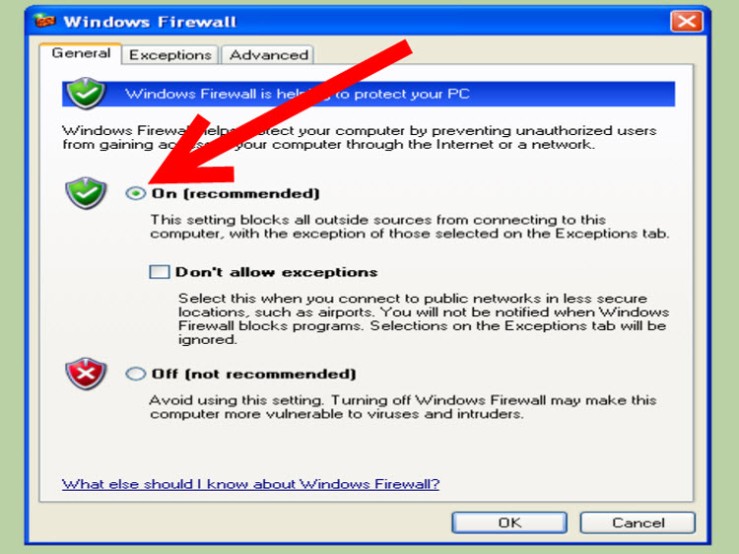How to Disable Firewall on Windows XP and Mac

Method 1. Windows XP
- Press Start. A user has to press this icon below-left corner of the screen. It will launch the Start list.
- Users have to keep their mouse cursor over the below-left corner to prompt the button to be visible.
- The user can also click the Window key to launch the Start menu.
- Press Run. At the right side of the Start pop-up window, a user can find this option.
- Enter firewall.cpl in the “Run” text field. The user can open the firewall setting directly.
- Press ok. This option will run the above command and launch firewall settings.
- Press the “Off (not recommended)” box. A user can find it below the page.
- If a user can’t locate this option, then press the General button at the top of the page.
- Press Ok. It will save the user’s changes and disable his or her computer’s firewall.
Method 2. MacOS
- Launch the Apple menu. At the top-left corner of the MacOS screen, the user can find an apple-shaped icon.
- Press System Preferences. At the below-down menu, the user can find this option.
- Press Security. The user can find this option in the top of an icon in the System Preferences operating system.
- Important: Quiet old version of Mac, the same above option will be Security & Privacy.
- Click Firewall. The user can find the button on top of the “Security” window.
- Press the lock icon. The user can find this icon at the below-left corner of the operating system.
- Enter the administrator password. It will allow the user to make changes to the menu.
- Press Turn Off Firewall. The user can see this tab in the middle of the web page.
- If the user finds Turn On Firewall here, then the user’s Mac’s firewall is already off.
- Press the lock icon again. It will save, and password will protect changes made by users.
Charlie Noah is a Microsoft Office expert and has been working in the technical industry since 2002. As a technical expert, David Smith has written technical blogs, manuals, white papers, and reviews for many websites such as office.com/setup.
Source: office.com/setup